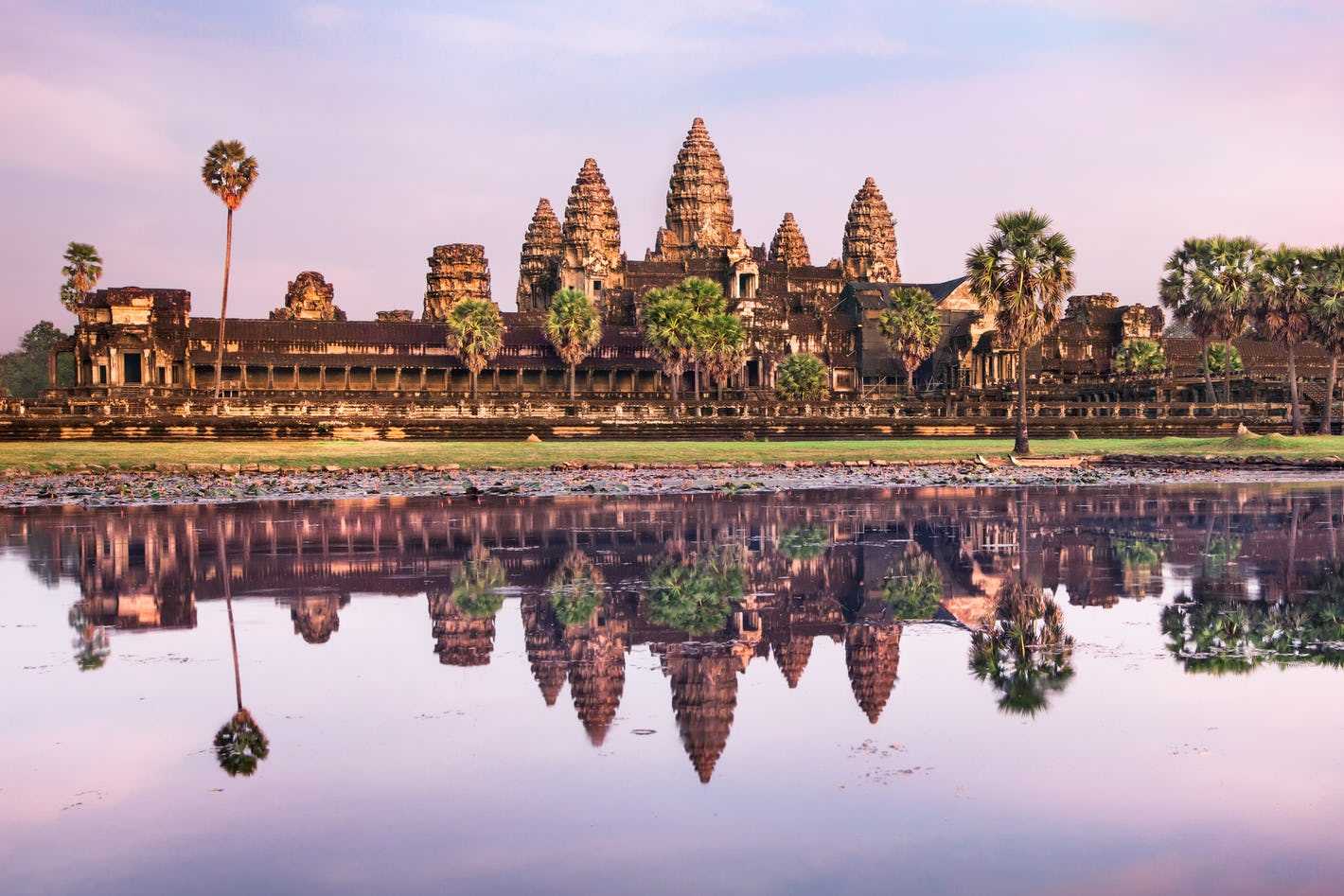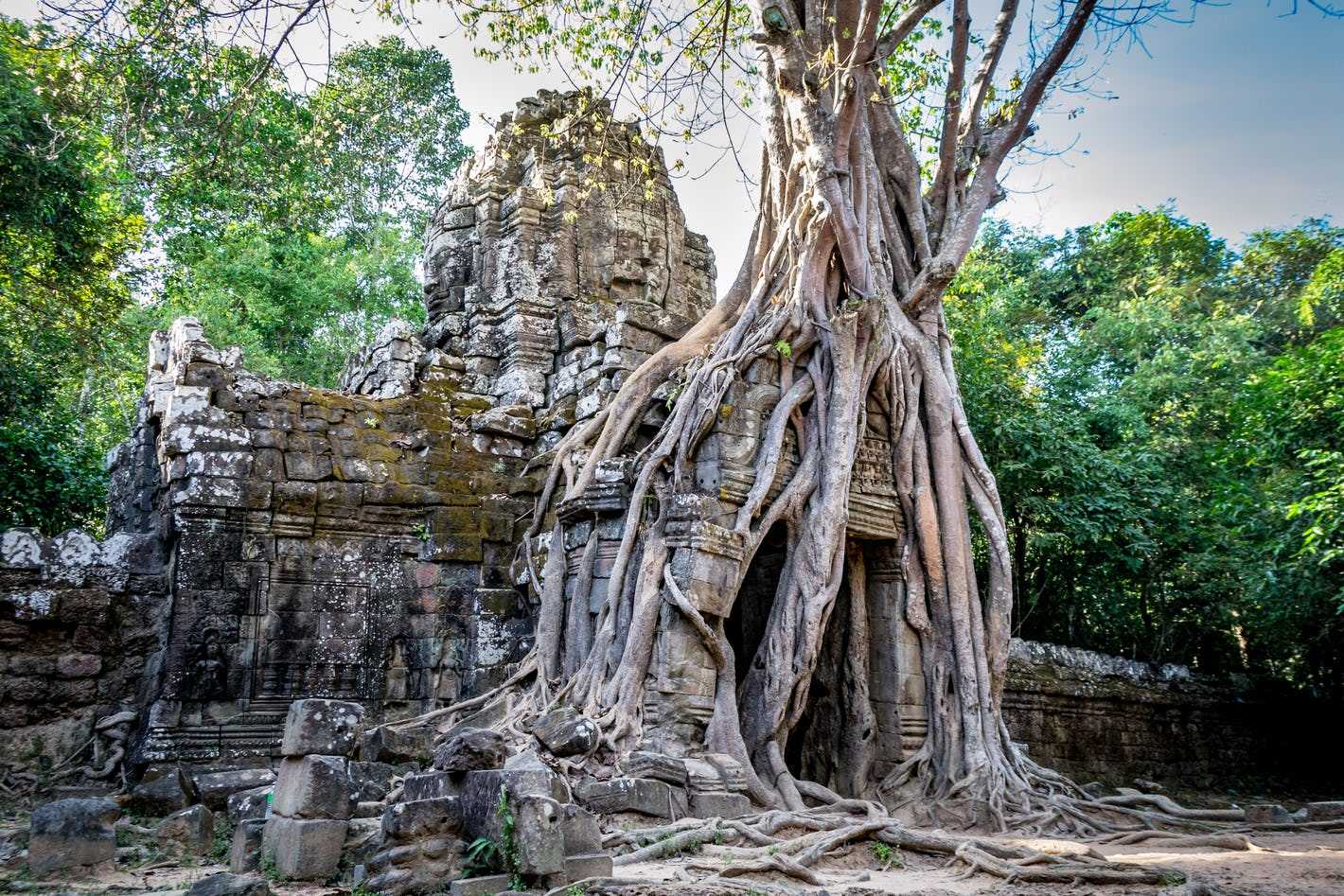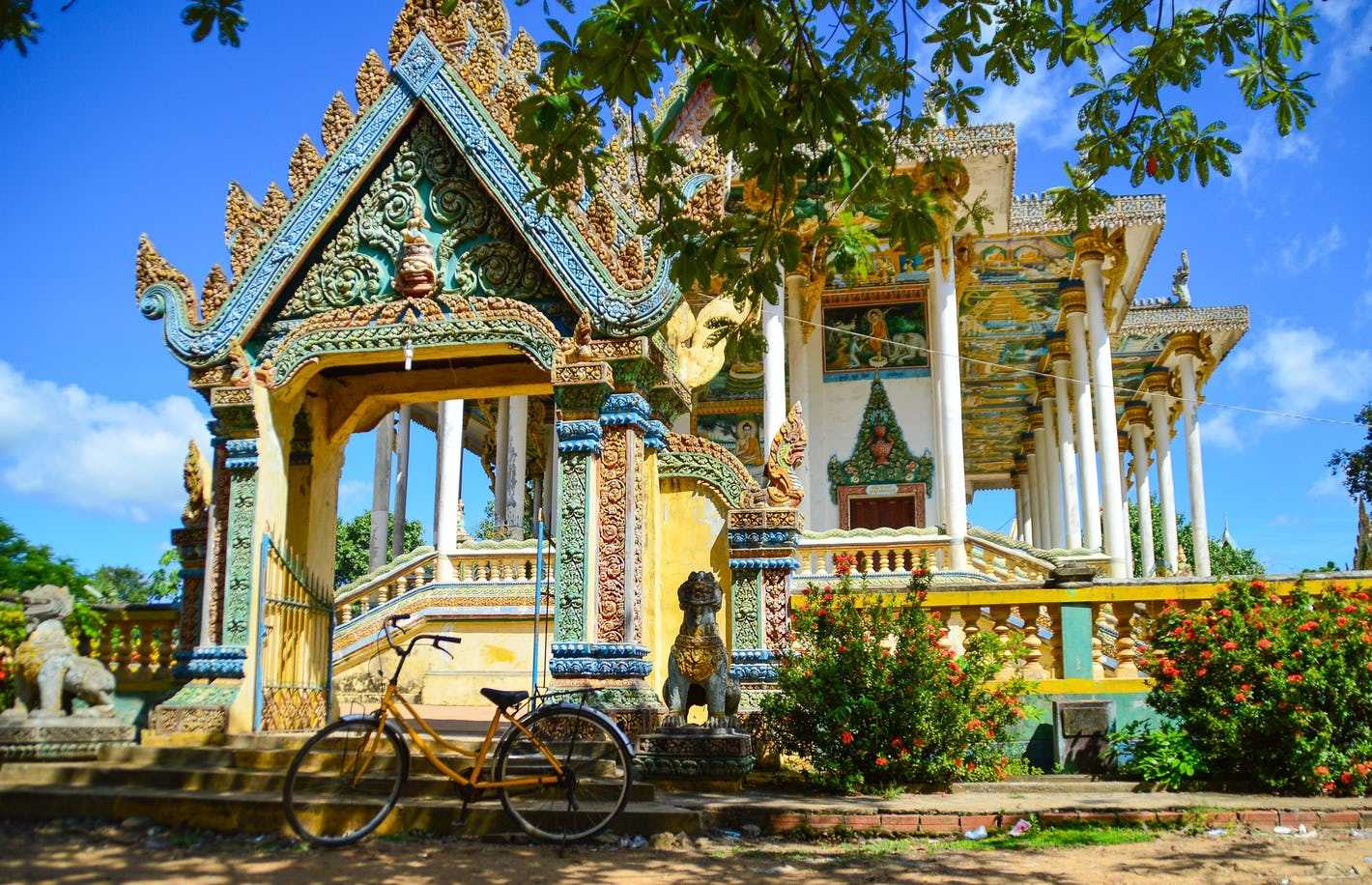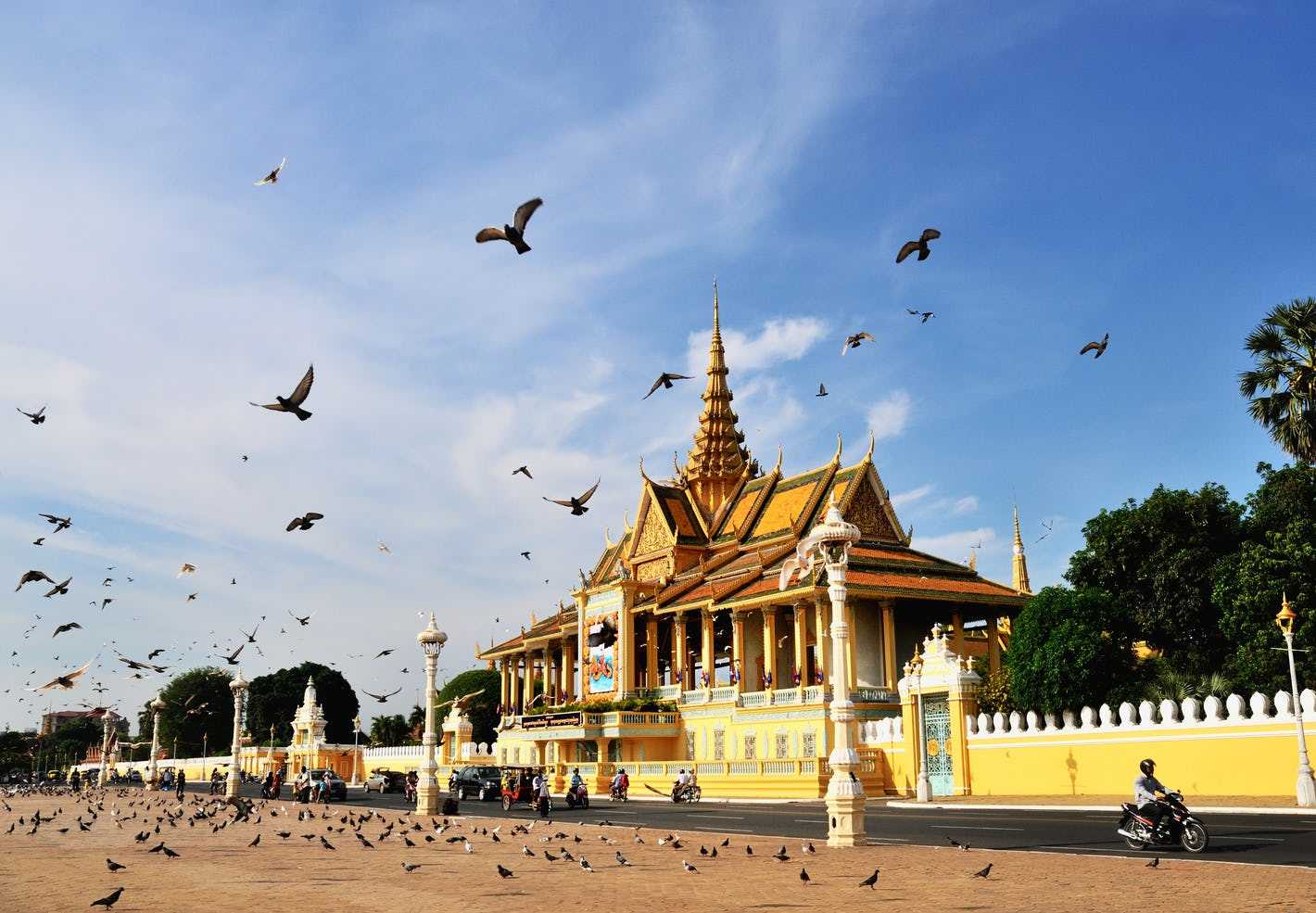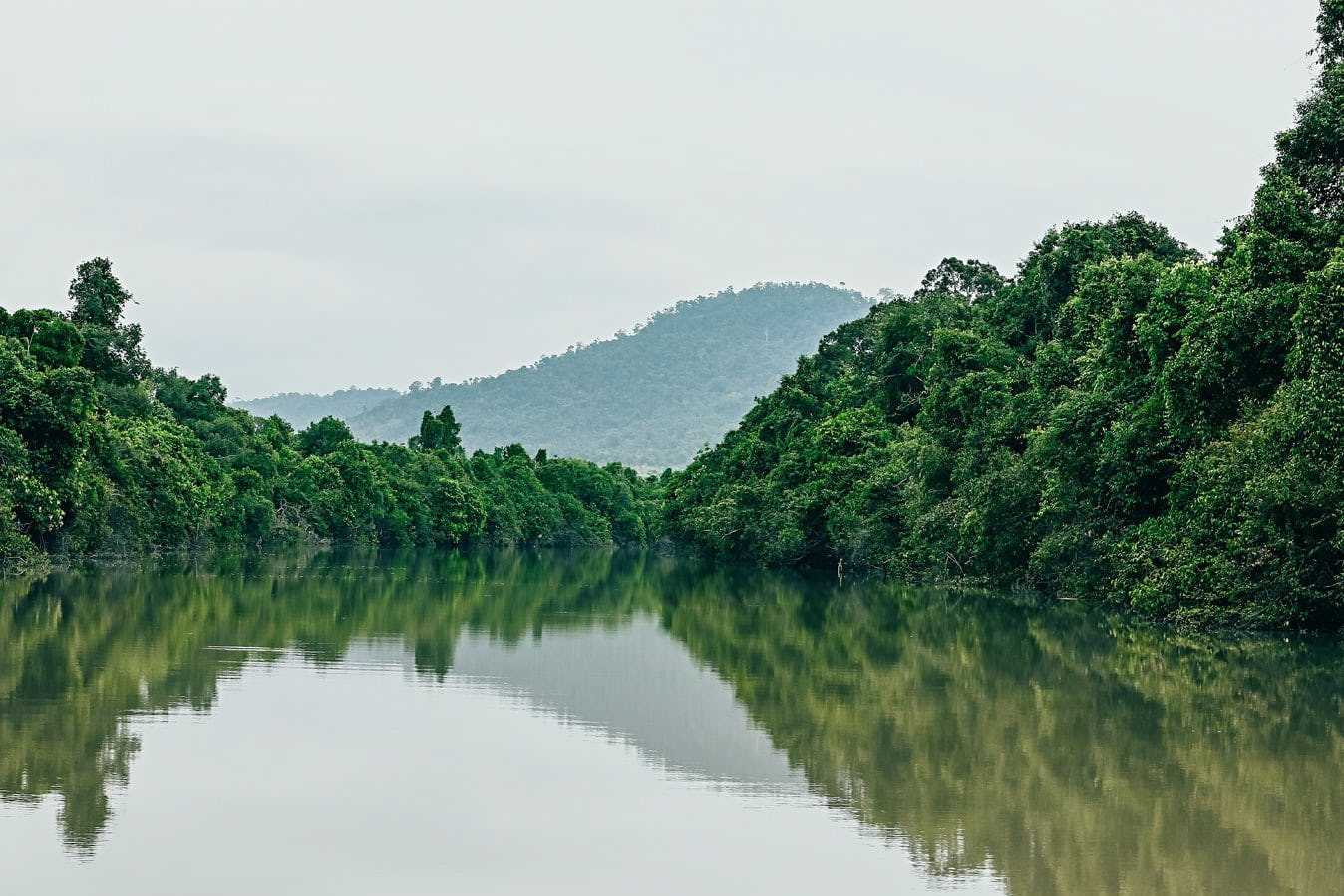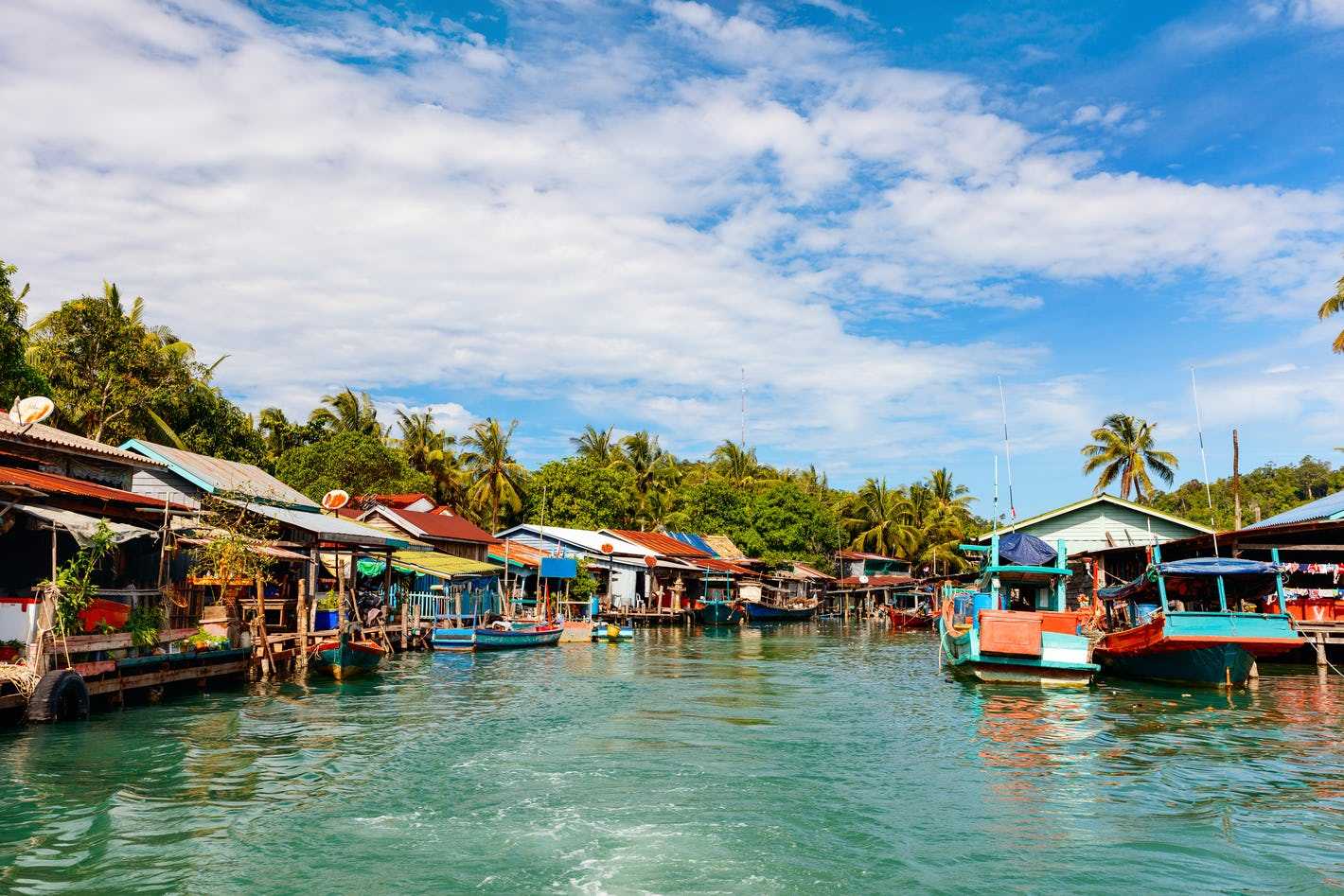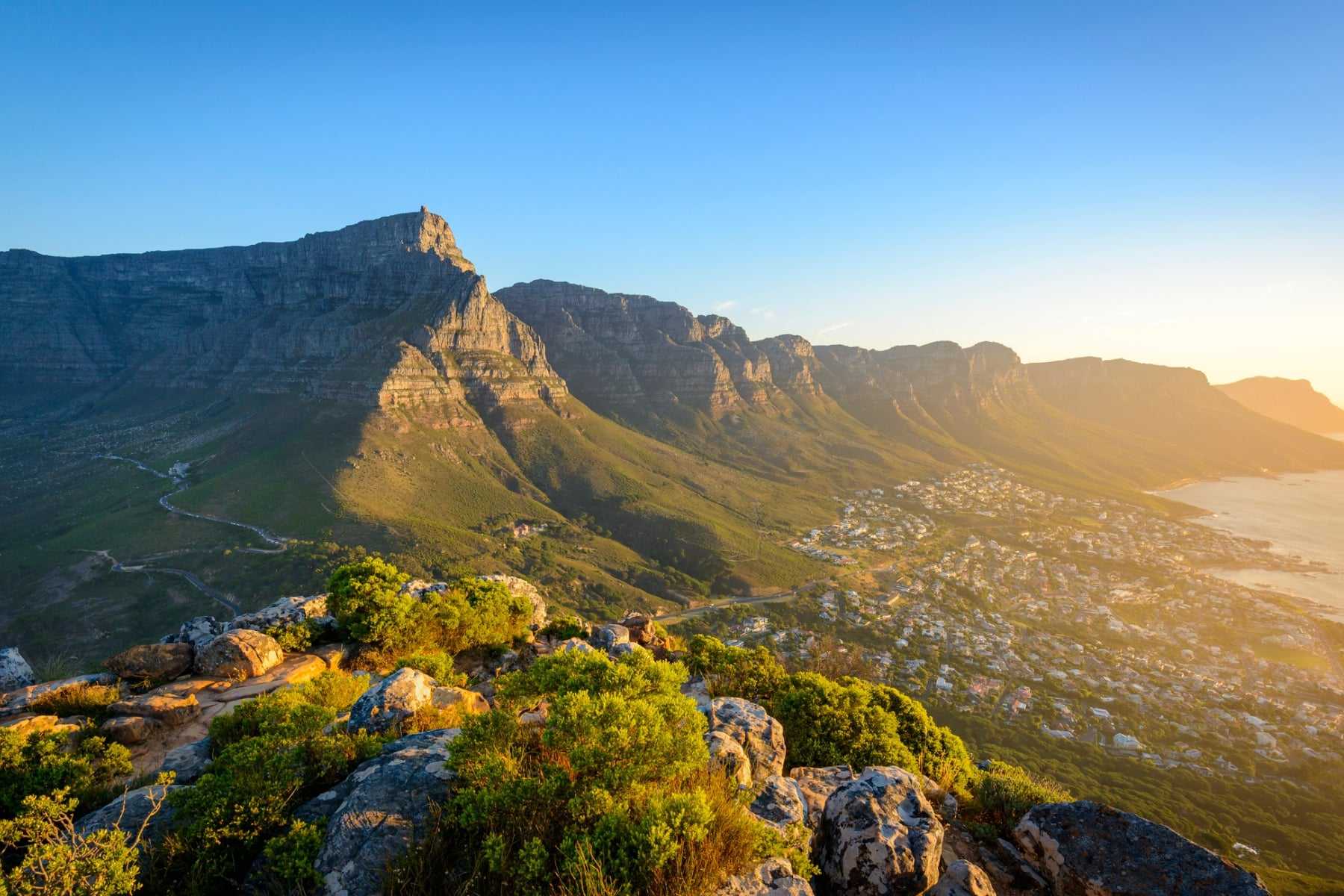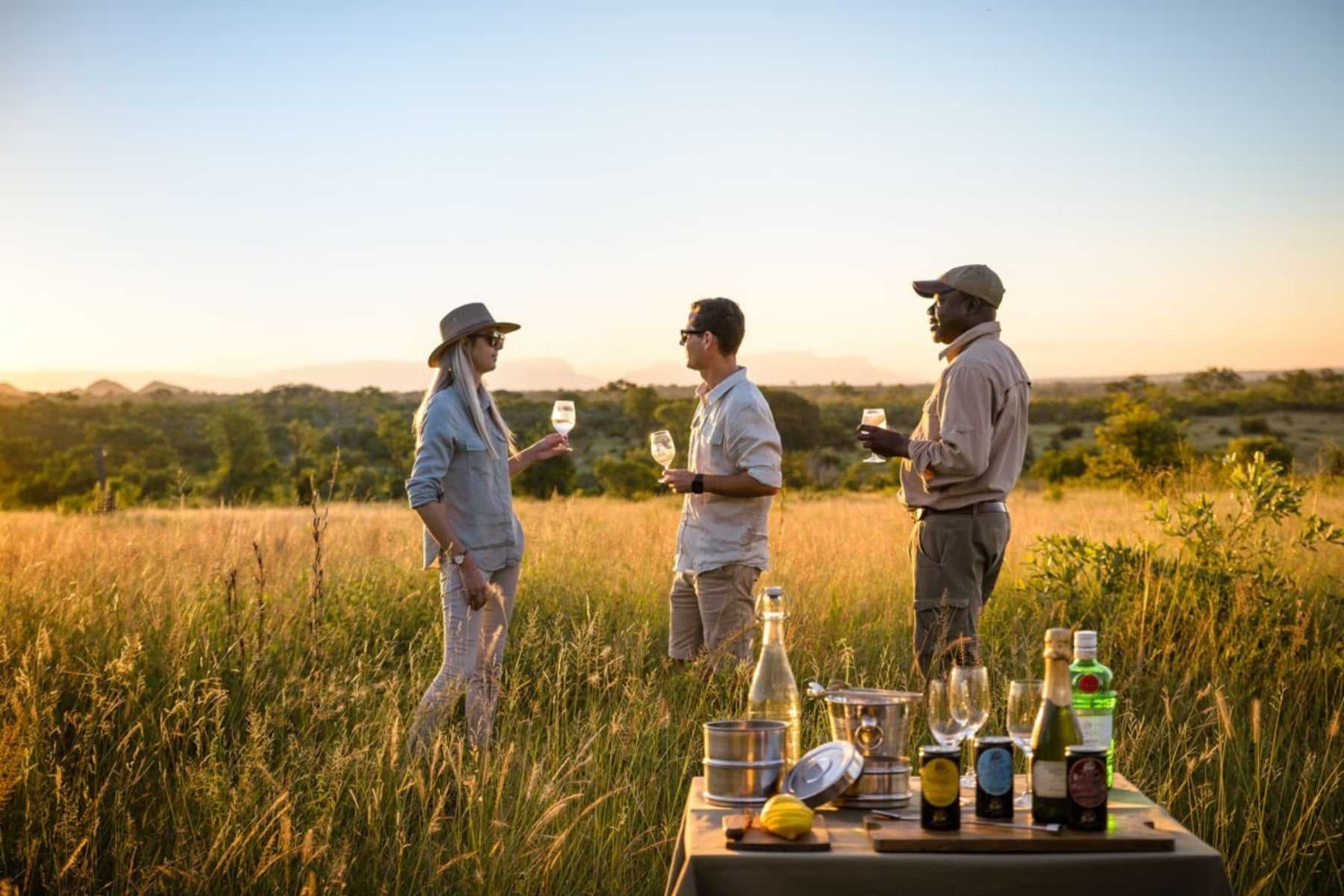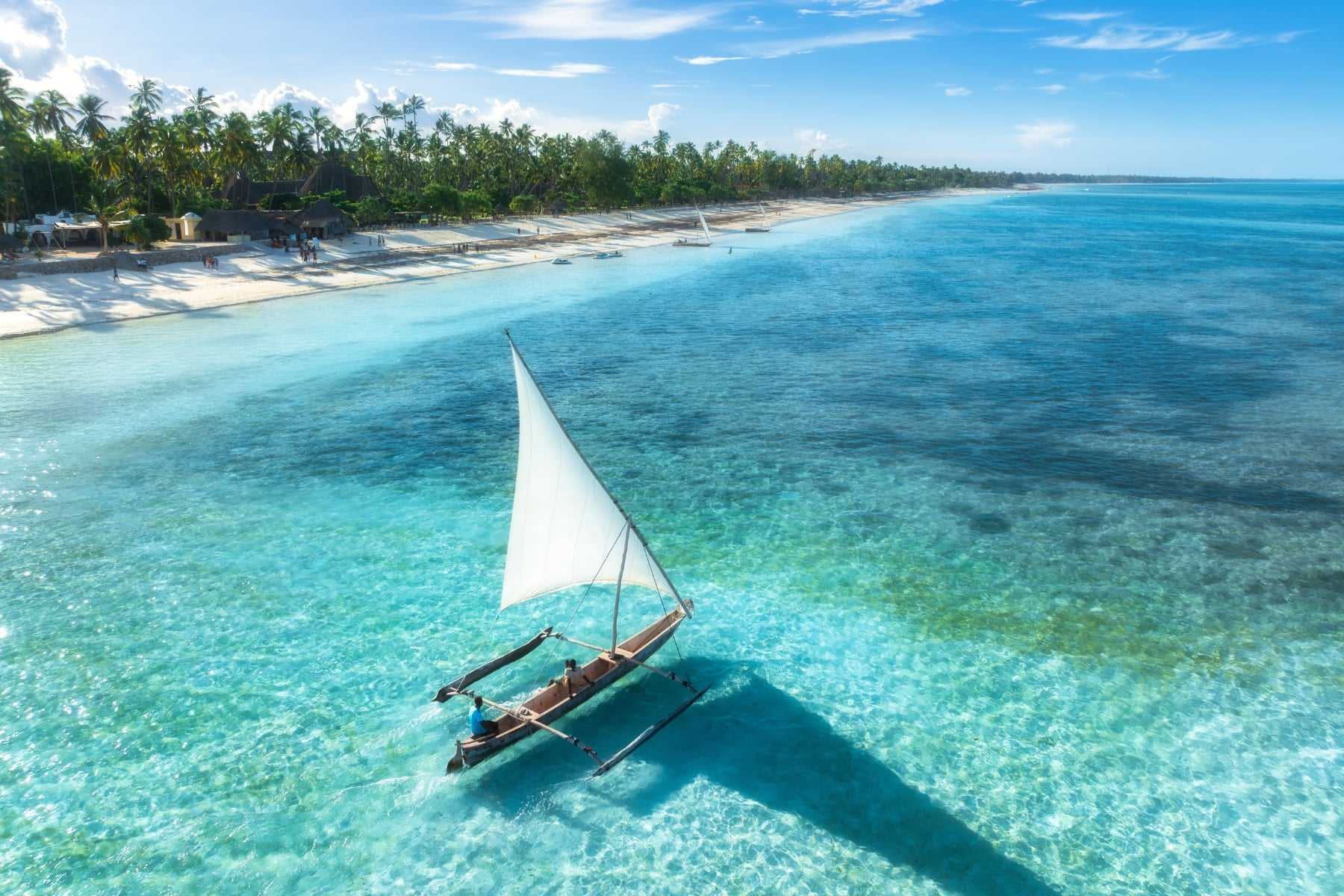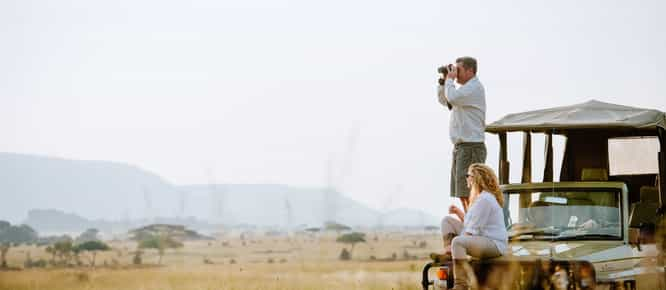Cambodia Country Guide
Packed with religious relics, history, beguiling beaches and communities who still retain their ancestors’ way of life, trips to charming Cambodia can be just about anything you want them to be. You’ve probably heard of hotspots like Phnom Penh and Angkor Wat, but there’s so much else to discover below the surface, from lush rice fields, magical rivers, wildlife hideouts and uber-friendly people. It’s truly not hard to fall in love with Cambodia – but even easier when you’ve got the knowledge you need to plan a trip right at your fingertips. Here’s hoping our ultimate Cambodia Country Guide will help…
Siem Reap
If you’ve ever thought about visiting Cambodia, we’re fairly certain that Angkor Wat will be high up on your list of places to see. Often thought of as a group of temples, the area was in fact an 12th century city, sprawled across an area of over 400-square kilometres and home to 1 million people. Today, it’s all about exploring the jungle-clad ruins, the most-visited of which are the temple complex of Angkor Wat, the stunning Bayon Temple, and the temple of Ta Prohm, famously overrun by trees. Many visitors simply spend the day here, arriving early in the morning to avoid the crowds (sunrise is without a doubt worth the early morning wake-up call), but if you have enough time, a multi-day pass will allow you to really get under the skin of the temples. Nearby is the city of Siem Reap, a buzzing hubbub of noise, sights and smells set to overwhelm the senses – in a good way! The markets are overflowing with delicious treats to eat, and you would be remiss not to take a trip to the infamous floating villages.
How do I do it?
Siem Reap is easily reached by air. If you’re already in situ in Cambodia, fly in from Phnom Penh, and from abroad, Bangkok, Singapore, Ho Chi Minh City or Vientiane have the best connections. To take in the sights, travelling to Siem Reap by road is possible from Phnom Penh either by private car (5 hours) or by bus (6-7 hours). Once in Siem Reap, it’s just a short 15-minute drive to the famous Angkor Wat, usually reached by private car or by hailing a local tuk-tuk.
Where do I start?
Our Classic Cambodia trip includes all the country’s must-visit destinations, from Angkor Wat to Phnom Penh and the Cardamom Mountains, and ends with a little beach time in Kep. Siem Reap also combines well with the highlights of Vietnam and our Ultimate Vietnam & Angkor Wat trip does exactly what it says on the tin.
Battambang
The laid-back, riverside town of Battambang is a soothing balm after the bustle of Siem Reap and Phnom Penh. Once the cultural heart of Cambodia, the peaceful spot was hit hard by the violent regime of Pol Pot and the Khmer Rouge, and many of its artists suffered in the genocide. Today, the area is home to something of a cultural renaissance and a wander through the streets will reveal charming cafes and pretty French buildings, boutiques and lovely art galleries. Cross the Sangkae River and you’ll find yourself in the midst of the rice fields – take a trip on the famous bamboo railway or hire bikes to explore the area properly. Those looking to learn more about Battambang’s heart-breaking history can take a trip to the Killing Caves of Phnom Sampeau to pay tribute to those who were lost to the cruel regime.
How do I do it?
The best way to reach Battambang is by bus from Phnom Penh (6-7 hours) or Siem Reap (3-4 hours). Whilst the journey times aren’t short, the benefit of travelling by road is that you can take in the lush green countryside as you travel through. There are boat services between Siem Reap and Battambang but whilst exciting, they aren’t quite so reliable and can be derailed by low water levels and in some seasons, water hyacinths!
Where do I start?
The beauty of our trips is that they can be totally customised to create your dream holiday so adding Battambang to almost any Cambodia trip is possible. Tick off the must-sees with Classic Cambodia, embark on a multi-country adventure with our Laos & Cambodia adventure or unleash your inner culture vulture with the Ultimate Vietnam & Angkor Wat trip – Southeast Asia is your oyster.
Phnom Penh
Cambodia’s capital city has long held a reputation for being a fly in, fly out destination, but amazing things are starting to happen in the city and a new lease of life is starting to attract a crowd, not to mention the burgeoning food scene. Restaurants are popping up left, right and centre offering everything from traditional Cambodian cuisine to new takes on old classics, and even exciting new microbreweries. The night life is enjoying a makeover too, with rooftop bars offering exquisite cocktails served with a side of sunset views. It’s not all food and drinks however, and culture lovers won’t be disappointed. Take a tour to learn about the city’s past as the ‘Pearl of Asia’ or visit The Killing Fields to understand the more recent, sobering history of the country. With all that, Phnom Penh has certainly earned its spot as a place to stay for at least a day or two in our eyes.
How do I do it?
It’s not tricky to navigate your way to Phnom Penh and the international airport is easily reached from several national and international destinations. Once you’ve landed, pick up a local tuk-tuk to whizz into the city itself. With its near-central location, the city is also an excellent base for exploring the rest of the country; there are plenty of flights to local airports, and buses and taxis to take visitors via the more scenic routes.
Where do I start?
The international airport acts as a central starting point for most Cambodia trips. From here, the country is yours to explore – head north to discover the temples of Angkor Wat and the Mekong Delta or venture south and relax on the paradisiacal beaches.
Cardamom Mountains
The rainforests of the Cardamom Mountains are the largest remaining in South East Asia, and are scented with the fragrant spice for which they are named. In years gone by, the mountains have been a tad tricky to access (and there are still some parts that are off-limits to visitors), but this has helped to maintain the tranquillity of the area as well as protect the endangered flora and fauna. Keep your eyes peeled for Asian elephant, clouded leopard, Siamese crocodile, gibbons, the elusive Malayan sun bear, and, if you’re very lucky, tigers. It’s also an excellent location to immerse yourself in rural life and there are homestays, cookery lessons, and plenty of hikes with local guides to be found. Like most of Cambodia, the mountains have their own sombre history and were one of the last bastions of the Khmer Rouge fighters, many of whom remained in the forest after the regime finally fell. Now, with eco-lodges setting up camp and conservation projects making this green expanse their top priority, the future is looking much brighter.
How do I do it?
Like we said, the Cardamom Mountains are remote and harder to reach than some areas, but don’t rule them out. The best access is by road, and it’s possible to take a bus from Phnom Penh to the region’s main town of Koh Kong (around 5 hours). From Koh Kong, a tuk tuk or bike will transfer you to the more out-of-the-way villages, or your lodge will organise transport.
Where do I start?
With the transport link to Phnom Penh, it’s possible to incorporate the blissful Cardamom Mountains into a number of trips in Cambodia. Enjoy the forests as part of a multi-country adventure and spend time in Laos or Vietnam first, or use the Classic Cambodia trip as a base and combine Cardamom with the beaches of Kep and the culture of Siem Reap.
The Coast
As far as Southeast Asia goes, Cambodia’s beaches are still relatively undiscovered. Whilst there’s a smattering of high end resorts, most of the coast manages to retain the smooth tropical charm of days gone by. First up is Kep, probably the most well-known location – although that’s not really saying much as this underdeveloped beach spot flies happily under the radar for most. Long stretches of palm-lined beaches are lapped by turquoise waters and day trips to neighbouring islands are perfect for a spot of snorkelling or kayaking. Kep is also something of a foodie haven with beachside restaurants serving up delectably fresh fish, including the local favourite fried crab and Kampot pepper.
Next up is Koh Rong and we’d go as far as to say the island is beach heaven personified. Despite being the second biggest island in the country, it’s a relaxed place where days are spent snorkelling, sun worshipping, and generally enjoying the gorgeous beaches and nights are for dining on locally-caught seafood. At certain times of year, there are night-time swims amongst the otherworldly phosphorescent plankton. Magic.
Last but not least is the ultimate in beach luxury, Krabey Island, the jewel in the Gulf of Thailand. Not just any resort, the private island has only 40 villas belonging to the opulent Six Senses. Think infinity pools with views to die for, a sumptuous spa, exceptional restaurants, a sunset bar serving glamorous cocktails, and even a gelato bar. But it’s not just the luxurious trimmings that will enchant you here; the island’s waters are pristine and packed full of colourful fish, the forest is bursting with flora and fauna, and the secluded beaches will steal your heart.
How do I do it?
Use Phnom Penh to reach any of these Cambodian coastal delights. The easiest way to reach Kep from the capital is by road, on either a bus or a private car (4.5 and 3.5 hours respectively). Koh Rong takes a few extra steps but is still fairly straightforward with a bus or private car from Phnom Penh to Sihanoukville (4-5.5 hours) or a local flight (45 minutes). From Sihanoukville it’s a 45-minute ferry ride to blissful Koh Rong. Sihanoukville is also where to head if you’re looking to visit Krabey Island. From there, you’ll be whisked to the resort’s private jetty and then make your way to the island aboard the Six Senses cruiser.
Where do I start?
If you’re visiting Cambodia, we’d say it’s almost imperative to add a little beach time onto the end of your trip – you know, to give you time to reflect on all the history and knowledge you’ve taken in or something like that… Kep slots in perfectly to both the Classic Cambodia and Laos & Cambodia adventure trips, but as all the beaches are within easy reach of the capital, you can add it to just about any itinerary.
